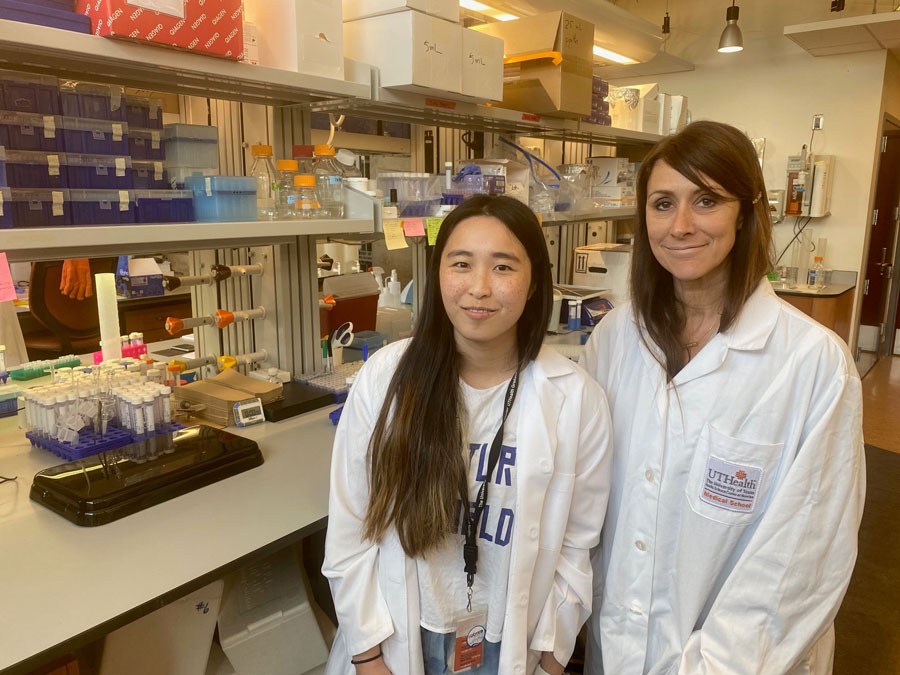Circadian rhythm research published in Cell Reports

Recent research from the lab of Kristin Eckel-Mahan, PhD, associate professor at the Brown Foundation Institute of Molecular Medicine, has been published in the June edition of Cell Reports.
The paper, titled “Cell-specific regulation of the circadian clock by BMAL1 in the paraventricular nucleus: Implications for regulation of systemic biological rhythms,” was co-authored by Rachel van Drunen, PhD; Yulin Dai, PhD; Zhongming Zhao, PhD; Jiaqian Wu, PhD; Qingchun Tong, PhD; Nicholas Justice, PhD; Seung-hee Yoo, PhD; and Eckel-Mahan.
“This study reveals the importance of circadian rhythms in a particular region of the brain in driving aspects of diurnal physiology, which changes over the course of the day/night cycle in which we exist on earth,” Eckel-Mahan said. “The study reveals specific genes and proteins with highly rhythmic activity in a part of the hypothalamus that controls processes such as the sleep/wake cycle, thermoregulation, and food intake.”
According to the researchers, circadian rhythms are essential for metabolic disease prevention. Disruption of these 24-h biological rhythms can lead to metabolic diseases like obesity and insulin resistance or even type-2 diabetes.
“This study addresses how the circadian clock functions in a region of the brain that is crucial for body-wide metabolism and physiology,” Eckel-Mahan said.
For the research, the investigators used a pre-clinical model to delete the circadian BMAL1 protein in the paraventricular nucleus, a small region located in the hypothalamus of the brain. Additionally, the investigators used genomics experiments to test where the factor binds to DNA within a normally functioning paraventricular nucleus and how it regulates diurnal changes in gene expression.
“We found that the circadian protein BMAL1 binds to many genes in this region and affects the rhythmicity of some target genes that are important for metabolism and feeding,” Eckel-Mahan said. “Specifically, this circadian protein appears to regulate whole-body rhythmicity in part by regulating endocrine factors such as oxytocin.”
Deletion of the BMAL1 protein in the paraventricular nucleus led to excess body weight, irregular feeding patterns, and low and non-variant expression of some endocrine factors, including oxytocin.
Moving forward, the lab will look to identify whether additional regions of the brain may be affected by the loss of BMAL1 in the paraventricular nucleus.
“The reasons for body weight gain and arrhythmic behavior are likely multifactorial and depend in part on other regions of the brain to which the PVN can communicate, including the master clock of the brain that is directly light-responsive,” Eckel-Mahan said.